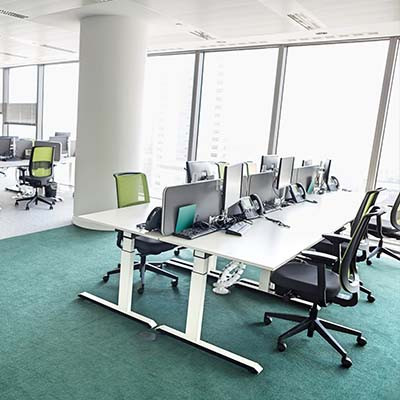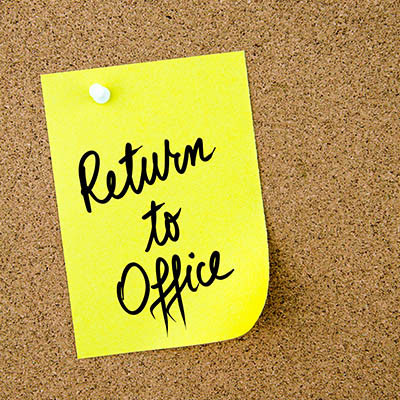Having your team connected through mobile, especially with access to collaboration and communication tools, is the new normal in business. Many organizations take advantage of the ubiquity of smartphones and either provide mobile devices to their staff or utilize the built-in options on many of today’s newest mobile OSs that allow them to put an encrypted work profile on; effectively adding mobility to your business without a huge capital investment. Regardless of what option you choose, you need to have management software in place if you are going to trust your employees to have access to company information outside of the office.
Osgood Unlimited Blog
Prior to the COVID-19 pandemic, business owners considered remote work a forbidden fruit. If employees got a taste, they would only want more of it. Nowadays, remote work is a bit more commonplace, no doubt as a result of the pandemic forcing most knowledge workers into some sort of remote work arrangement. How have companies adjusted to this new reality? Let’s look at the numbers.
With remote and hybrid work models becoming prominent parts of the business world, it’s time to start considering the challenges and benefits that such work can bring about for your own organization. Specifically, you want to examine how engagement is affected by these workplace models. How can you ensure employee satisfaction, productivity, and retention even while utilizing a remote or hybrid workplace model?
A trained and engaged workforce is going to put you well ahead of the majority of your competition, and technology goes a long way toward making this goal a reality. With the right technology in place, your business and its employees can be productive and engaged even while working remotely. It all starts with increasing access to tools while building a company culture that can withstand the pressures of remote work.
Remote work has changed the way that businesses approach normal operations. Due in large part to the disruptions of the past couple of years, remote work has become a staple of the business environment, and while you might hear stories of businesses pushing hard to return to the workplace, the reality is that they are the exception rather than the norm.
For reasons that we’re all too familiar with, the workplace changed drastically a few years ago when office workers everywhere suddenly found themselves thrust into remote work. As it turns out, a lot of them have liked being able to work remotely. That makes the efforts of a few outspoken companies to roll back remote work somewhat worrisome… but experts aren’t convinced these outliers represent the reality of the situation.
It isn’t uncommon to hear about how much working from home has environmental benefits—and on its face, this claim makes a lot of sense. We did have to wonder, however, how much greener remote work really is—if at all.
Let’s go into why the question of whether remote work is the environmentally friendly option isn’t as clear-cut as you might expect.
The idea of hot desking, or foregoing the traditional assigned workstation office organization method, is increasing in popularity, and for good reason. There might be several pros and cons to it, but people are generally finding that the benefits outweigh the costs. Let’s go over how you can implement hot desking to save money and improve operations.
With plenty of benefits to be had from both in-house and remote operations, many companies have been working to take advantage of a hybrid approach to business. While this approach has proven greatly beneficial to businesses in assorted ways, there are a few drawbacks that need to be addressed. One major one: a lack of inclusivity.
After this prolonged pandemic, remote work has established itself as a key component of many organizations’ operational policies and infrastructures. However, it has added new levels of complexity that make managing a workforce more important than ever. Let’s discuss some ways management can improve the work experience for remote employees.
Cybersecurity is something that must be reinforced both in the office and out of the office for your remote employees, and it’s unfortunately quite difficult to maintain. Let’s take a look at the unique circumstances surrounding the remote worker and how you should reinforce security best practices for them, even if they are not physically present in the workplace.
Widespread remote work is a relatively new method of operations for most businesses, but even with the limited amount of time it has been in play, the benefits it contributes have been made abundantly clear. Working on the assumption that remote work won’t be abandoned as quickly as it was adopted and instead may see some growth, let’s hypothesize what impacts it could bring to society as a whole.
Contrary to what many might assume, remote work is commonly associated with overwork—employees working longer hours and having difficulties disconnecting from professional life during their personal time. This can have some serious consequences if not offset in some way, so let’s discuss how this can be accomplished.
Whether you take advantage of it or not, the cloud is a major part of most businesses’ IT infrastructures—especially with the ongoing pandemic, which has kept many workers out of their offices and off of the in-house network. If your business is one of the few that has managed to stay afloat without the cloud, let’s change that. With a high-quality cloud solution, you can future-proof your business in ways you may not have considered.
The fact that many of their workers never see each other has led to some interesting shifts in the way that businesses approach communications. They used to just walk across the room and have a conversation, but as people try to make sense of the hybrid work environment, communications will continue to be a key. Let’s take a look at how your internal and external communications strategies will change to meet the needs of your roving workforce.
For all its benefits, remote work can introduce plenty of complications. These complications can easily make employees question a lot of things about their careers, including whether or not they should continue working for the same company they have been. This has been particularly the case amongst workers with children also in the home.
While we would never suggest that remote work is a bad thing, it wouldn’t be right for us to pretend that it is a perfect solution. It just isn’t. For a few glaring examples, let’s turn to the complicated impact that remote work can have on the environment. While we’ll still acknowledge the benefits of remote solutions, this kind of reflection may just help you to determine how to shape your business’ future: namely, how much of that future will be based on remote operations.



















